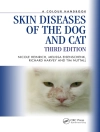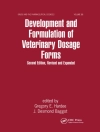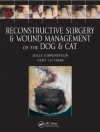Raptor biology has evolved enormously since the publication of the
original edition of this book under the title Veterinary Aspects
of Captive Birds of Prey. With the help of leading
international experts, John E. Cooper has updated and expanded this
classic reference to include all the latest data on the health and
diseases of raptors. While still serving the needs of veterinary
surgeons who treat birds of prey, Birds of Prey: Health &
Disease also appeals to a wide readership of falconers, avian
researchers, breeders, rehabilitators and zoo staff.
Important changes to this new edition are the inclusion of data
on free-living birds, additional material on fractures, pathology,
legislation and poisons, and new sections on neonatology, health
monitoring, captive-breeding and host-parasite relations.
This book reviews all aspects of birds of prey, giving
invaluable up-to-date information on diseases and pathology, but
also looking at the history of the subject, the origins of terms,
the evolution of current thinking and ending with a reliable list
of primary references for further reading.
Innehållsförteckning
Foreword – Patrick T. Redig; Foreword to the First Edition (1978),
with Tribute – Leslie Brown; Preface; List of Contributors;
Introduction – the history of raptor medicine; Nomenclature;
Anatomy – Paolo Zucca; Methods of investigation and treatment;
Non-infectious diseases; Infectious diseases, excluding
macroparasites; Parasitic diseases – with Oliver Krone; Foot
conditions; Neurological (nervous) disorders; Nutritional diseases,
including poisoning, in captive birds; Poisoning of wild
(free-living) birds – contributed by David Peakall; Anaesthesia and
surgery; Miscellaneous and emerging diseases; Diseases in wild
(free-living) bird populations – contributed by Ian Newton;
Discussion and conclusions;.
Appendix I – List of species raptor; Appendix II – Clinical
examination form; Appendix III – Post-mortem examination form and
egg/embryo examination forms; Appendix IV – Cytology, blood smear
and other report forms; Appendix V – Key to major clinical
diagnoses; Appendix VI – Key to major (gross) post-mortem diagnoses
including findings in eggs; Appendix VII – The principles of health
monitoring; Appendix VIII – Minimally invasive health monitoring;
Appendix IX – Medicines and other agents used in treatment;
Appendix X – Fieldwork, field kits and portable equipment, Field
post-mortem technique; Appendix XI – Legislation and codes of
practice relevant to working with raptors – Margaret Cooper;
References and Further Reading; Index
Om författaren
John E. Cooper is a veterinary surgeon who has had a life-long involvement in raptors and other wildlife. He works closely with naturalists, bird-keepers, biologists, conservationist, and members of both the medical and veterinary professions. With his wife, Margaret E. Cooper, a lawyer, he has lived overseas for ten years, mainly in Africa. In Britain he is primarily a diagnostic pathologist, concentrating on wildlife an exotic species. He has postgraduate and specialist qualifications in tropical veterinary medicine, biology, comparative pathology and avian medicine. He holds appointments at several academic institutions in Europe and Africa. Author of many books and papers, he has a particular interest in promoting veterinary educations, conservation and both human and animal welfare in a global context.












